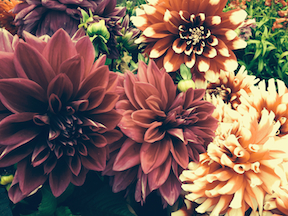Fall Harvest!
By Cynthia Brian “Delicious Autumn! My soul is wedded to it, and if I were a bird, I would...
Read Moreby Cynthia Brian | Oct 11, 2022 | Empowerment | 0 |
By Cynthia Brian “Delicious Autumn! My soul is wedded to it, and if I were a bird, I would...
Read Moreby Cynthia Brian | Aug 31, 2022 | Empowerment | 0 |
By Cynthia Brian “The gathering of salads, radishes, and herbs made me feel like another about her...
Read Moreby VoiceAmerica | Oct 19, 2018 | Health & Wellness | 0 |
Kristen Harper’s interview on the Marc Struczewski Podcast will be released on October 19th...
Read Moreby VoiceAmerica | Jul 31, 2014 | Empowerment, Variety | 0 |
âI long to accomplish a great and noble task, but, it is my chief duty to accomplish small tasks...
Read More




